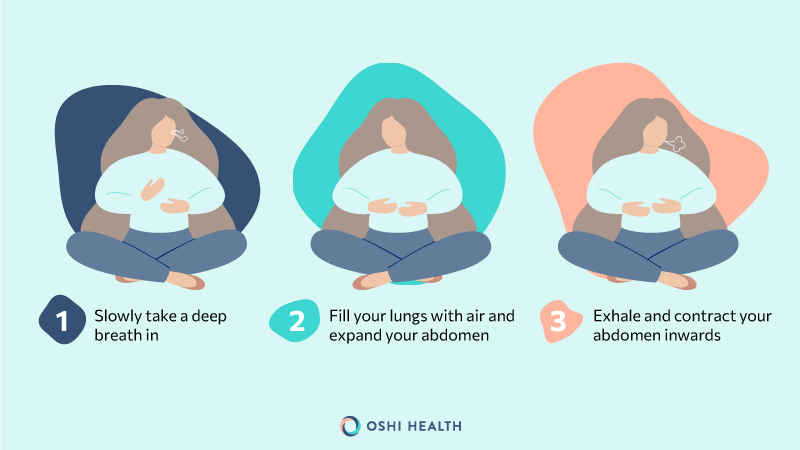
Benefits of belly breathing
If you’ve ever felt butterflies in your stomach before a big event, you may know that the body’s natural response to stress is to enter “fight or flight” mode. Our fight or flight reaction causes changes in gut functioning, which result in GI symptoms, such as discomfort, pain, constipation, diarrhea, and more.
Belly breathing counteracts this natural reaction by stimulating our parasympathetic nervous system to reduce stress hormones, decrease muscle tension, activate our relaxation response, and promote GI relief.
Once you learn the technique, you can use belly breathing anywhere, anytime to help improve your symptoms. Belly breathing can:
- Reduce bloating and feelings of urgency
- Reduce abdominal pain and discomfort
- Improve digestion
- Help with more complete bowel movements
Belly breathing: Demonstration and instructions
1. Sit or lie in a comfortable place. Close your eyes.
2. Place one hand on your chest and one hand on your abdomen. The bottom hand should do the moving. The top hand should remain still or only move as the bottom hand moves.
3. Inhale through your nose for about 4 seconds, feeling your abdomen expand. (You may feel slight tension the first few times you inhale.)
4. Exhale very slowly and steadily through your mouth for about 6 seconds. The mouth should be relaxed.
5. Repeat for 1-5 minutes.
Practicing at home
Belly breathing may sound easy but it takes practice – and will feel more natural over time. To begin, set aside 10 minutes to practice at various times throughout the day, whether or not you’re experiencing digestive discomfort. This will proactively train your body to maintain its “rest and digest” state and help you regain control from unwanted GI issues.
Start by practicing 3 times a day for 1-5 minutes each time.
You can watch the belly breathing demonstration above for guidance.
During your appointment, your Oshi Health provider will personalize belly breathing to best address your specific needs and help resolve your GI symptoms.
